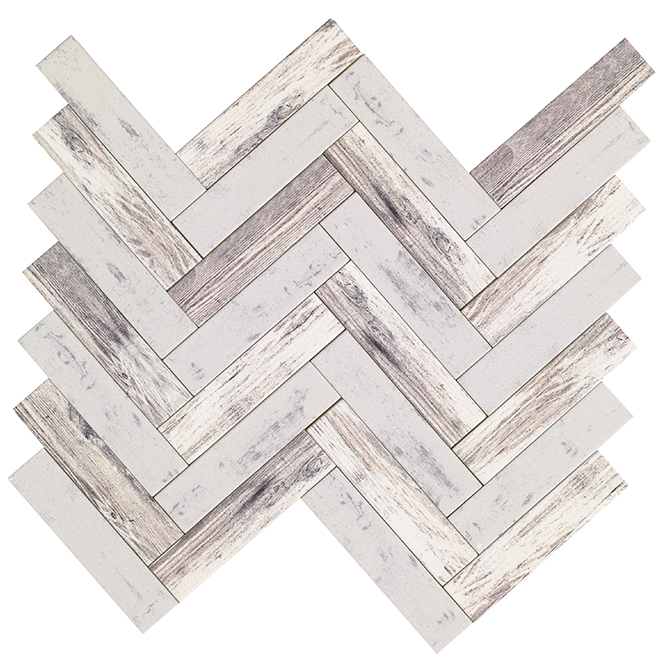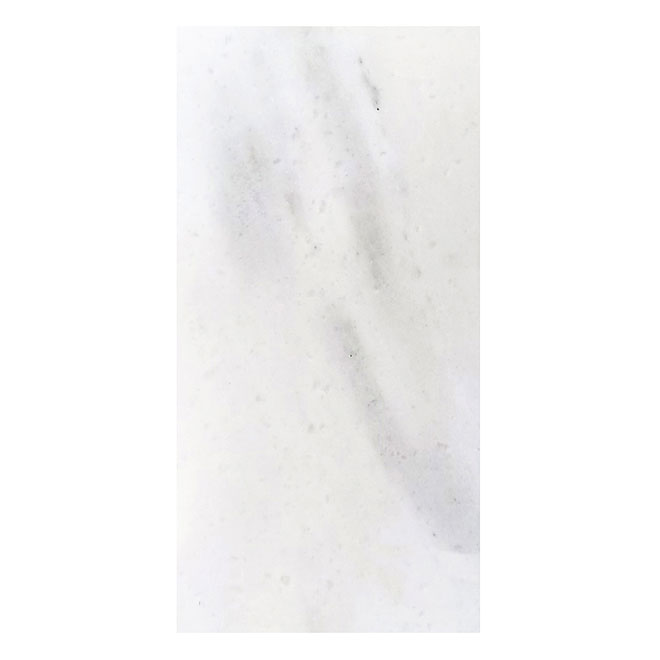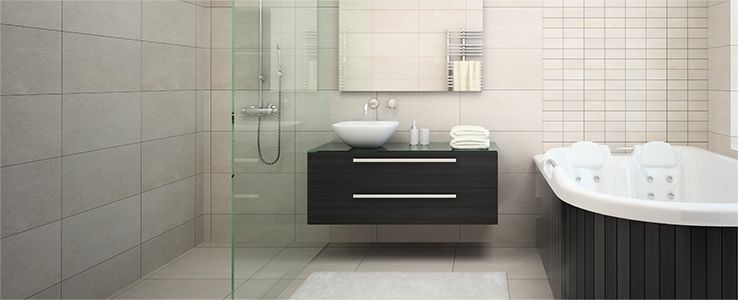Materials
Tiles can be grouped into six categories:
Ceramic, Porcelain, Glass, Natural stones such as marble, granite and slate, Terracotta and Concrete.
Ceramic, Porcelain, Glass, Natural stones such as marble, granite and slate, Terracotta and Concrete.

Ceramic
Ceramic is made from clay, pressed and fired at high temperatures until it hardens. A glaze is then applied to give it a glossy or matte finish, which will also determine its resistance to water. The durability of ceramic tiles varies, according to how thick they are.
Some ceramic tiles are even made to look like other materials. Imitation slate tiles, for example, are a lot less porous than stone and require less maintenance.
Ceramic tile is divided into five categories, or "classes", depending on resistance to wear. Class 1 rated tiles are the least resistant and for use only on walls, while Class 5 rated tiles are the most hard-wearing and especially suitable for floors in high-traffic areas.
Shop the tilesSome ceramic tiles are even made to look like other materials. Imitation slate tiles, for example, are a lot less porous than stone and require less maintenance.
Ceramic tile is divided into five categories, or "classes", depending on resistance to wear. Class 1 rated tiles are the least resistant and for use only on walls, while Class 5 rated tiles are the most hard-wearing and especially suitable for floors in high-traffic areas.

Porcelain
Like ceramic, porcelain tiles are made from clay fired at very high temperatures. They are among the most durable tiles available, highly resistant to chips and scratches, and water repellent. Porcelain tiles are generally used indoors but some are made specifically for use outdoors. They are easy to clean because they do not absorb liquid.
Shop the tiles
Glass
Glass tiles are back in a big way! The latest trend is to use them on whole portions of wall. Some manufacturers are now also making tiles from recycled glass – an affordable and eco-friendly alternative.
Glass is more fragile than stone or porcelain, which makes it more difficult to cut. Glass tiles should be set with a special type of adhesive and white grout to ensure the colour is not altered. Versatile and easy to clean, glass tiles have become a firm favourite.
Shop the tilesGlass is more fragile than stone or porcelain, which makes it more difficult to cut. Glass tiles should be set with a special type of adhesive and white grout to ensure the colour is not altered. Versatile and easy to clean, glass tiles have become a firm favourite.

Natural stone
Tiles made of natural stone such as marble, granite and slate are an increasingly popular flooring choice, especially for living rooms and bedrooms. The fact that they must be cut with a wet saw makes them a little trickier to install.
Stone tiles are porous and therefore vulnerable to marks and stains; regular application of a sealer is recommended to protect the surface and prevent them from absorbing dirt. Nevertheless, they are highly durable and, if properly cared for, can last a lifetime.
Shop the tilesStone tiles are porous and therefore vulnerable to marks and stains; regular application of a sealer is recommended to protect the surface and prevent them from absorbing dirt. Nevertheless, they are highly durable and, if properly cared for, can last a lifetime.
Terracotta
While some terracotta tiles are still hand made and fired in wood kilns the traditional way, what we call terracotta nowadays is made from porous porcelain. However, the look is authentic.
This type of tile is relatively difficult to clean and must be coated regularly with a sealer; however, it is extremely hard-wearing and, if looked after properly, will last for many years. True terracotta tiles acquire a patina over time.
Shop the tilesThis type of tile is relatively difficult to clean and must be coated regularly with a sealer; however, it is extremely hard-wearing and, if looked after properly, will last for many years. True terracotta tiles acquire a patina over time.
Concrete
Concrete tiles, made from cement mixed with very fine aggregate, often look similar to stone, terracotta or even ceramic. Traditionally used in outdoor landscaping, concrete tiles are now increasingly being used indoors as a flooring option.
They are produced in a wide variety of colours, patterns and textures. These tiles are heavier than ceramic tiles, but they are particularly resistant to wear and to temperature fluctuations.
Shop the tilesThey are produced in a wide variety of colours, patterns and textures. These tiles are heavier than ceramic tiles, but they are particularly resistant to wear and to temperature fluctuations.














